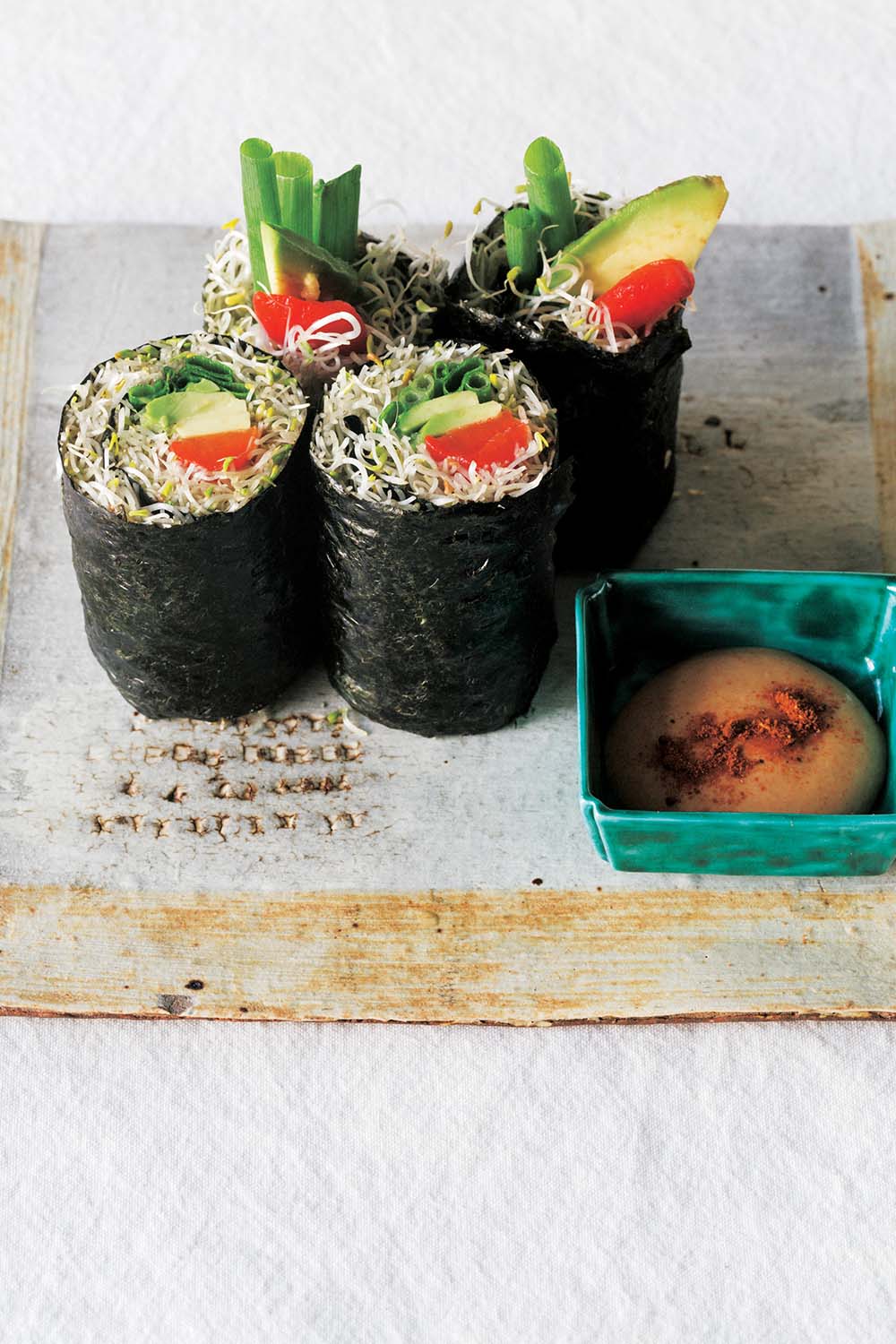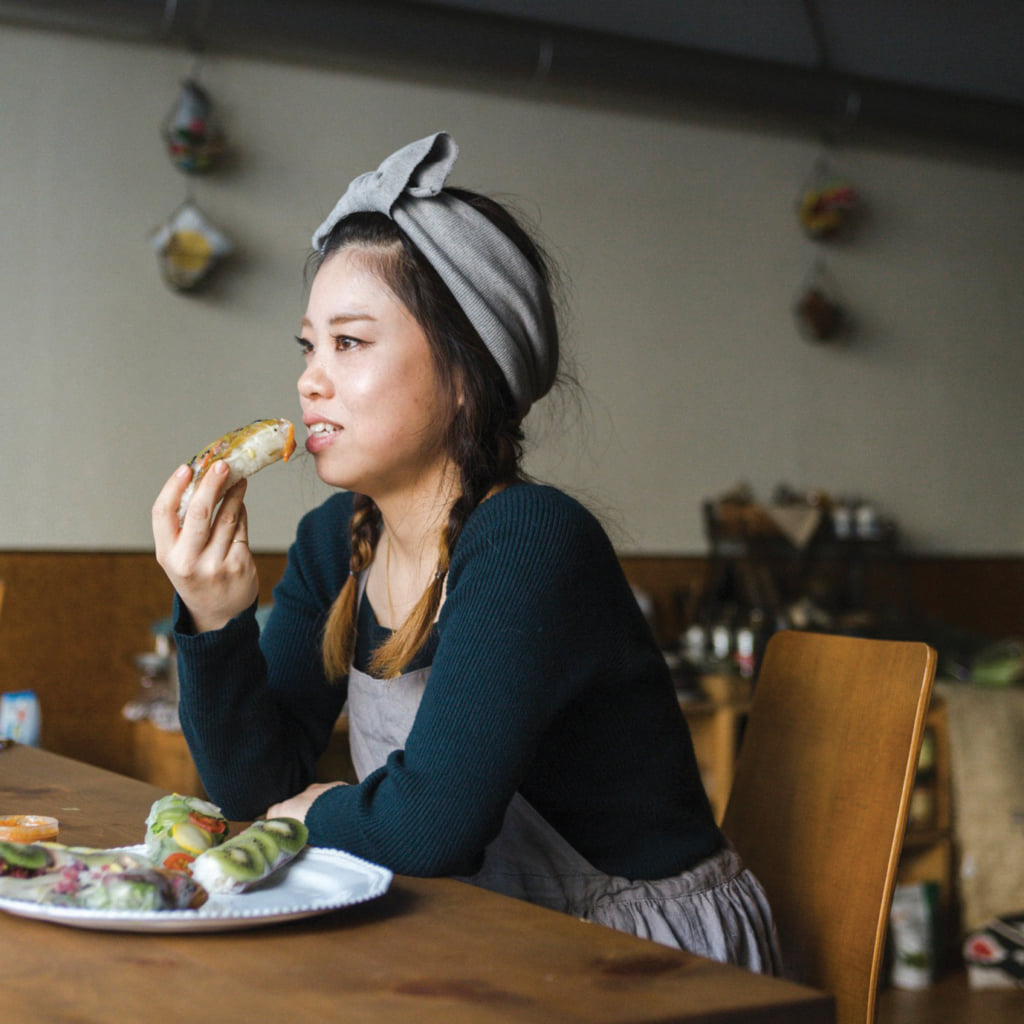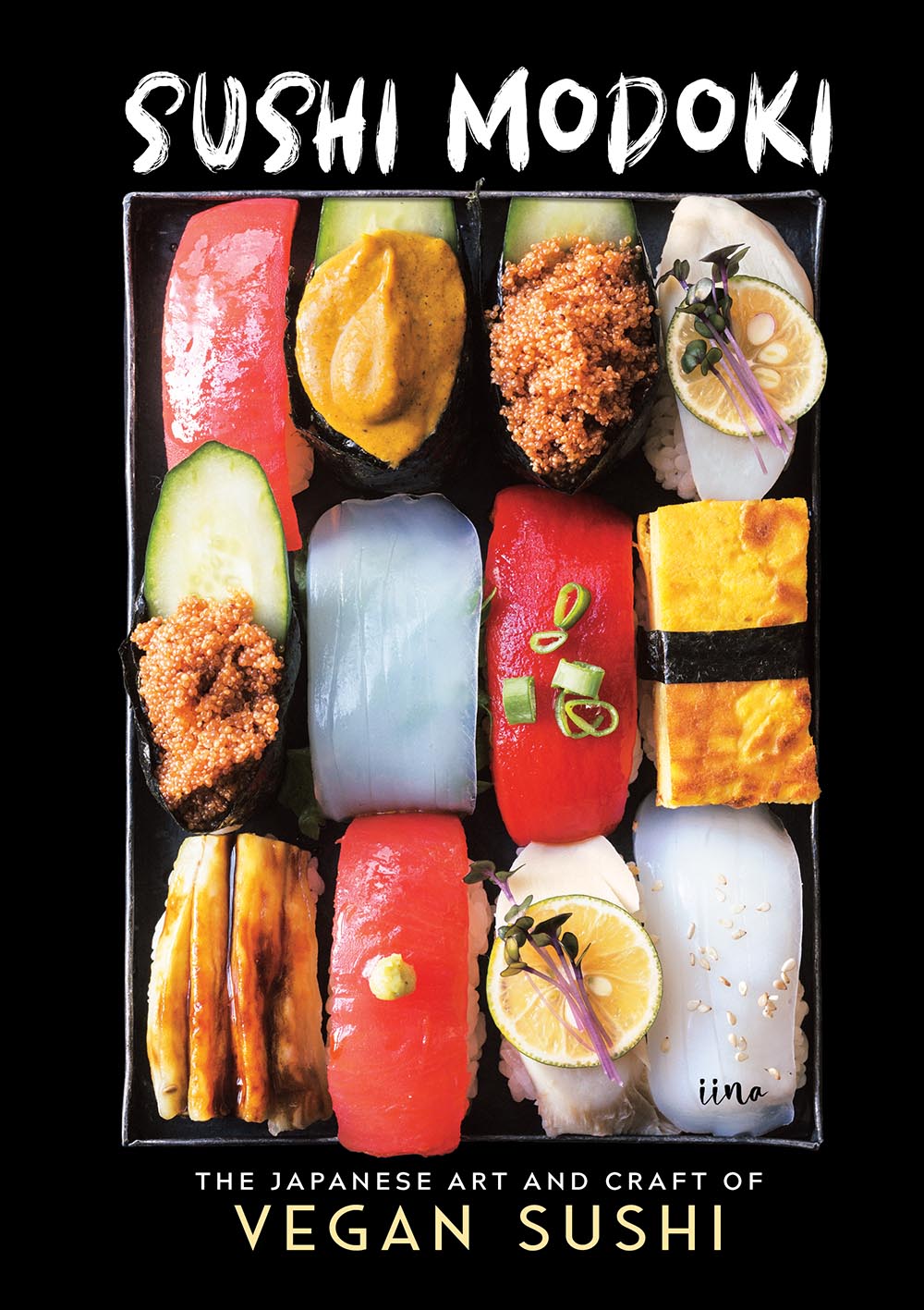Recipe for Vegan Alfalfa Sprout Roll by iina
Rich in protein and magnesium, these germinated seeds can easily replace the fish or seafood found in traditional maki.

© Sushi Modoki
In this recipe for gunkan (“warship”), a slightly thicker type of maki, germinated alfalfa seeds—very rich in protein and magnesium—replace the usual crabmeat or shirasu (small fish). The roll is therefore suitable for vegans.
Looking at the photos in iina’s book Sushi Modoki without paying close attention, readers might think it’s a classic sushi recipe book. Upon closer examination, however, sharp eyes will notice that the traditional tuna and salmon, key ingredients in sushi, have been replaced by tomato and carrot respectively.
It’s a game of trickery that should have been suspected, given that the key to it lies in the title of her book, Sushi Modoki—modoki being Japanese for ‘imitation.’
Ingredients
⅓ avocado (50 g)
¼ red bell pepper (30 g)
2 scallions
One 21 × 19 cm nori sheet
30 g alfalfa sprouts
Spicy mayonnaise (see below), optional
Spicy mayonnaise (makes 50 g)
50 g tofu mayonnaise
½ teaspoon paprika
¼ teaspoon garlic powder
¼ teaspoon salt
⅛ teaspoon cayenne pepper
⅛ teaspoon ground cumin
Tofu mayonnaise (makes 450 to 500 g)
1 pack silken tofu (396 g)
120 ml canola oil
2 tablespoons apple cider vinegar
1 teaspoon Dijon mustard
1 teaspoon salt
Method
Cut the avocado and pepper into sticks ¼-inch (5 mm) wide. Cut the scallions to the same width as the nori sheet.
Assemble the futomaki (see below) but spread the alfalfa sprouts (instead of sushi rice) on the nori, using the avocado, pepper, and scallions as the filling. Apply water along the end of the nori to glue it together. Serve with spicy mayonnaise, if desired.
Futomaki
Prepare vinegar water (equal parts water and rice vinegar) in a small bowl.
Place a sushi mat flat-side-up on a flat working surface. Place a sheet of nori coarse-side-up on top, aligning the nori and the mat.
Moisten your hands well with vinegar water. Spread 150 g sushi rice on the nori, leaving a 1-cm margin on the near side and a 1.5-cm margin on the far side.
Arrange the fillings across the sushi rice slightly below the middle. Add multiple fillings in layers.
Pick up the near side of the mat and roll it over the filling and away from you. With your left hand, pull up on the far side of the mat while holding the rolled portion of the mat to tighten the roll and continue rolling.
Set the roll aside for a couple of minutes before cutting to the desired size (this will make it easier to slice).
Sushi Modoki (2019) by iina is published by The Experiment.
Chef iina makes exclusively vegan dishes, and also uses no processed white sugar or artificial colourings in her recipes. She graduated from L’ecole Vantan Culinary School in Tokyo, then settled at Brown’s Field, an organic farm in the south of Chiba Prefecture, where she learnt to grow and preserve organic fruit and vegetables. She then became the chef at Rice Terrace Café, before moving to Tokyo and beginning her career as a vegan chef.
Sushi Modoki is iina’s first book. It also contains detailed ideas for salads, soups, and drinks alongside the sushi recipes.

© Shinsaku Kato

© Sushi Modoki
TRENDING
-
A House from the Taisho Era Reveals Its Secrets
While visiting an abandoned building, Hamish Campbell discovered photographs the owner had taken of the place in the 1920s.

-
The Taboo-Breaking Erotica of Toshio Saeki
The master of the 1970s Japanese avant-garde reimagined his most iconic artworks for a limited box set with silkscreen artist Fumie Taniyama.

-
With Meisa Fujishiro, Tokyo's Nudes Stand Tall
In the series 'Sketches of Tokyo', the photographer revisits the genre by bringing it face to face with the capital's architecture.

-
Masahisa Fukase's Family Portraits
In his series ‘Family’, the photographer compiles surprising photos in which he questions death, the inescapable.

-
Hajime Sorayama's Futuristic Eroticism
The illustrator is the pioneer for a form of hyperrealism that combines sensuality and technology and depicts sexualised robots.





